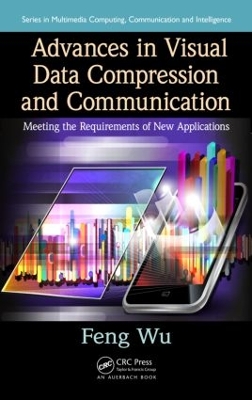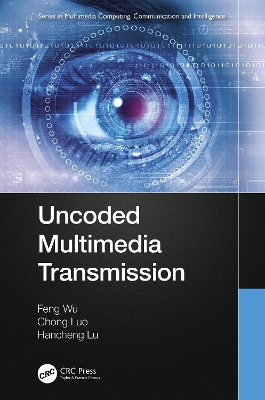Multimedia Computing, Communication and Intelligence
2 total works
Visual information is one of the richest and most bandwidth-consuming modes of communication. To meet the requirements of emerging applications, powerful data compression and transmission techniques are required to achieve highly efficient communication, even in the presence of growing communication channels that offer increased bandwidth.
Presenting the results of the author's years of research on visual data compression and transmission, Advances in Visual Data Compression and Communication: Meeting the Requirements of New Applications provides a theoretical and technical basis for advanced research on visual data compression and communication.
The book studies the drifting problem in scalable video coding, analyzes the reasons causing the problem, and proposes various solutions to the problem. It explores the author's Barbell-based lifting coding scheme that has been adopted as common software by MPEG. It also proposes a unified framework for deriving a directional transform from the nondirectional counterpart. The structure of the framework and the statistic distribution of coefficients are similar to those of the nondirectional transforms, which facilitates subsequent entropy coding.
Exploring the visual correlation that exists in media, the text extends the current coding framework from different aspects, including advanced image synthesis-from description and reconstruction to organizing correlated images as a pseudo sequence. It explains how to apply compressive sensing to solve the data compression problem during transmission and covers novel research on compressive sensor data gathering, random projection codes, and compressive modulation.
For analog and digital transmission technologies, the book develops the pseudo-analog transmission for media and explores cutting-edge research on distributed pseudo-analog transmission, denoising in pseudo-analog transmission, and supporting MIMO. It concludes by considering emerging developments of information theory for future applications.
An uncoded multimedia transmission (UMT) system is one that skips quantization and entropy coding in compression and all subsequent binary operations, including channel coding and bit-to-symbol mapping of modulation. By directly transmitting non-binary symbols with amplitude modulation, the uncoded system avoids the annoying cliff effect observed in the coded transmission system. This advantage makes uncoded transmission more suited to both unicast in varying channel conditions and multicast to heterogeneous users.
Particularly, in the first part of Uncoded Multimedia Transmission, we consider how to improve the efficiency of uncoded transmission and make it on par with coded transmission. We then address issues and challenges regarding how to better utilize temporal and spatial correlation of images and video in the uncoded transmission, to achieve the optimal transmission performance. Next, we investigate the resource allocation problem for uncoded transmission, including subchannel, bandwidth and power allocation. By properly allocating these resources, uncoded transmission can achieve higher efficiency and more robust performance. Subsequently, we consider the image and video delivery in MIMO broadcasting networks with diverse channel quality and varying numbers of antennas across receivers. Finally, we investigate the cases where uncoded transmission can be used in conjunction with digital transmission for a balanced efficiency and adaptation capability.
This book is the very first monograph in the general area of uncoded multimedia transmission written in a self-contained format. It addresses both the fundamentals and the applications of uncoded transmission. It gives a systematic introduction to the fundamental theory and concepts in this field, and at the same time, also presents specific applications that reveal the great potential and impacts for the technologies generated from the research in this field. By concentrating several important studies and developments currently taking place in the field of uncoded transmission in a single source, this book can reduce the time and cost required to learn and improve skills and knowledge in the field.
The authors have been actively working in this field for years, and this book is the final essence of their years of long research in this field. The book may be used as a collection of research notes for researchers in this field, a reference book for practitioners or engineers, as well as a textbook for a graduate advanced seminar in this field or any related fields. The references collected in this book may be used as further reading lists or references for the readers.

